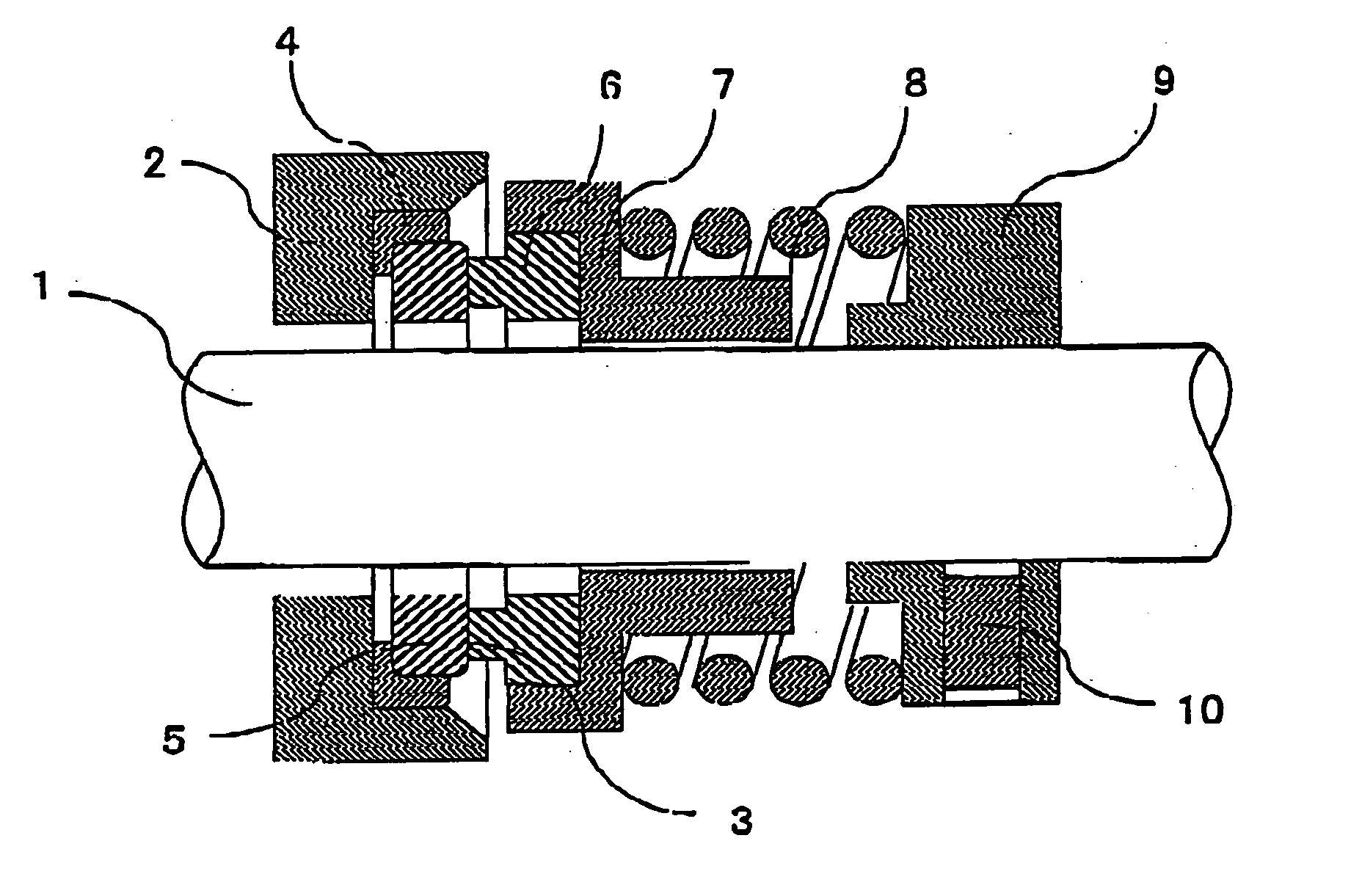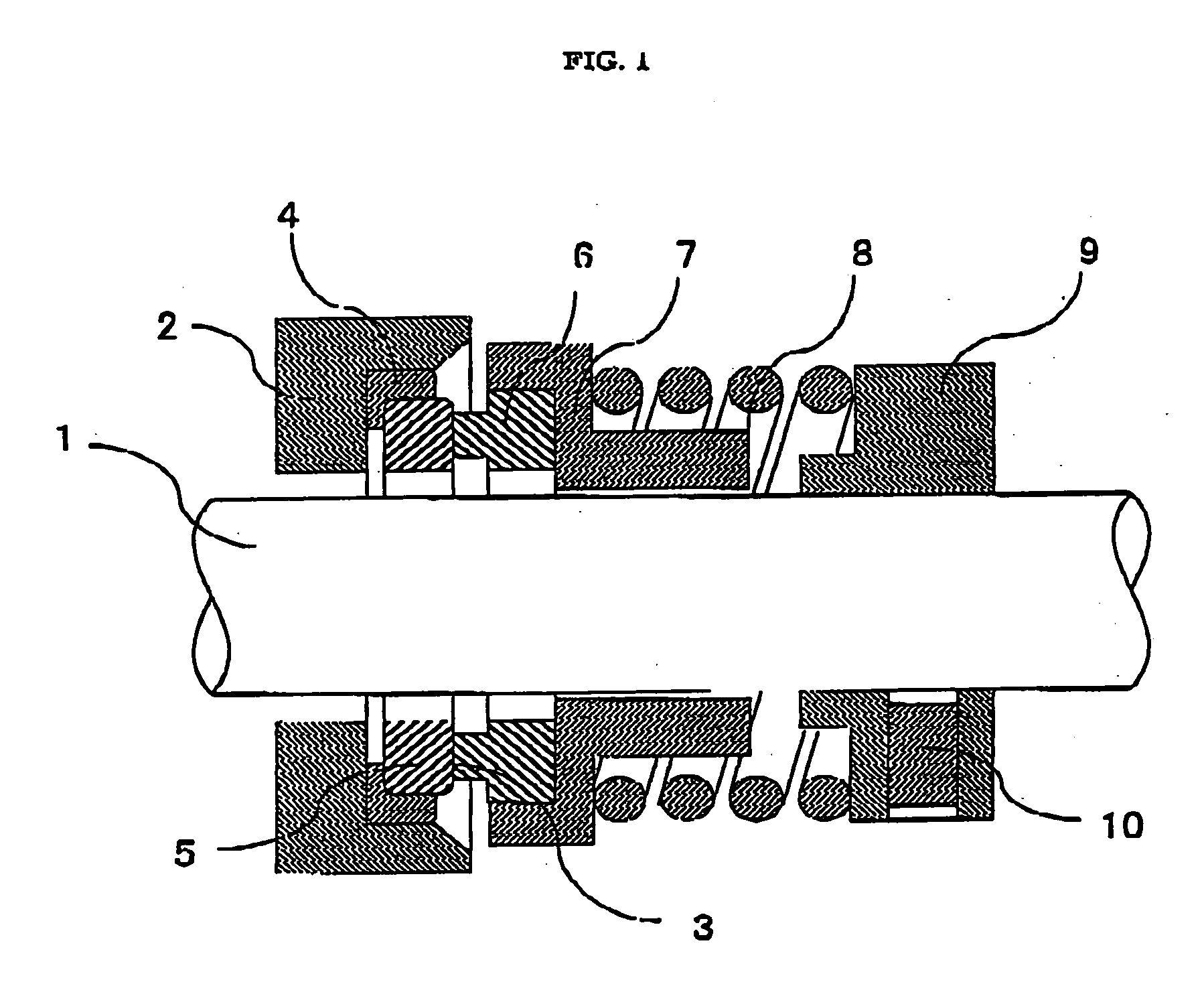Porous ceramic sintered body for slidable member, manufacturing method thereof, and seal ring
a technology of porous ceramic and slidable parts, which is applied in the direction of engine seals, domestic applications, engine components, etc., can solve the problems of cracks, deterioration of strength, and the use of cross-linked polystyrene beads and emulsion-polymerized polystyrene beads as pore forming materials, and achieve excellent sliding properties, excellent productivity, and high-quality porous
- Summary
- Abstract
- Description
- Claims
- Application Information
AI Technical Summary
Benefits of technology
Problems solved by technology
Method used
Image
Examples
example 1
[0075] To 100% by weight of silicon carbide powder containing 0.5% by weight of silica, 3.7% by weight of alumina powder and 0.6% by weight of yttria powder as sintering additive, 122% by weight of water, and 0.3% by weight of aqueous ammonia as dispersing agent, and 84% by weight of urethane balls were put in a ball mill, and mixed for 48 hours to produce a slurry.
[0076] To this slurry, as forming aid, 2.0% by weight of glycerin, 4.0% by weight of acrylic resin and 1.8% by weight of sorbitan ester of fatty acid were added and mixed, and then spray drying was performed to prepare granulating powder.
[0077] Subsequently, to 100% by weight of this granulating powder, pore forming materials, which are of the type and have the rate of addition as indicated in Table 1, were added and mixed to prepare a mixed raw material. This mixed raw material was formed in a predetermined shape under a pressure of 1 ton / cm2.
[0078] Relating to the obtained powder green body, its elastic recovery rate...
example ii
[0089] To 100% by weight of silicon carbide powder containing 0.5% by weight of silica, 3.7% by weight of alumina powder and 0.6% by weight of yttria powder as sintering additive, 122% by weight of water, and 0.3% by weight of aqueous ammonia as dispersing agent, and 84% by weight of urethane balls were put in a ball mill, and mixed for 48 hours to produce a slurry.
[0090] To this slurry, forming aids, the types and the amounts of addition of which are as indicated in Table 2, were added and mixed, and then spray drying was performed to prepare granulating powder.
[0091] Subsequently, to 100% by weight of this granulating powder, 8% by weight of resin beads as pore forming material, which is composed of suspension-polymerized non-cross-linked styrene-acryl copolymer and has a mean particle diameter of 39 μm, was added and mixed to prepare a mixed raw material.
[0092] This mixed raw material was formed in a predetermined shape under a pressure of 1 ton / cm2. The forming shot number, w...
example iii
[0099] To 100% by weight of silicon carbide powder containing 0.5% by weight of silica, alumina powder and yttria powder as sintering additives, which have the respective rates as indicated in Table 3; 122% by weight of water; 0.3% by weight of aqueous ammonia as dispersing agent; and 84% by weight of urethane balls were put in a ball mill and mixed for 48 hours to produce a slurry.
[0100] To this slurry, 2.0% by weight of glycerin and 4.0% by weight of acrylic resin and 1.8% by weight of sorbitan ester of fatty acid as forming aids were added and mixed, and then spray drying was performed to prepare granulating powder.
[0101] Subsequently, to 100% by weight of this granulating powder, resin beads composed of suspension-polymerized non-cross-linked styrene-acryl copolymer as pore forming material, which has the particle diameter and the rate as indicated in Table 3, was added and mixed to prepare a mixed raw material.
[0102] This mixed raw material was formed in a predetermined shap...
PUM
| Property | Measurement | Unit |
|---|---|---|
| Length | aaaaa | aaaaa |
| Fraction | aaaaa | aaaaa |
| Fraction | aaaaa | aaaaa |
Abstract
Description
Claims
Application Information
 Login to View More
Login to View More - R&D
- Intellectual Property
- Life Sciences
- Materials
- Tech Scout
- Unparalleled Data Quality
- Higher Quality Content
- 60% Fewer Hallucinations
Browse by: Latest US Patents, China's latest patents, Technical Efficacy Thesaurus, Application Domain, Technology Topic, Popular Technical Reports.
© 2025 PatSnap. All rights reserved.Legal|Privacy policy|Modern Slavery Act Transparency Statement|Sitemap|About US| Contact US: help@patsnap.com


